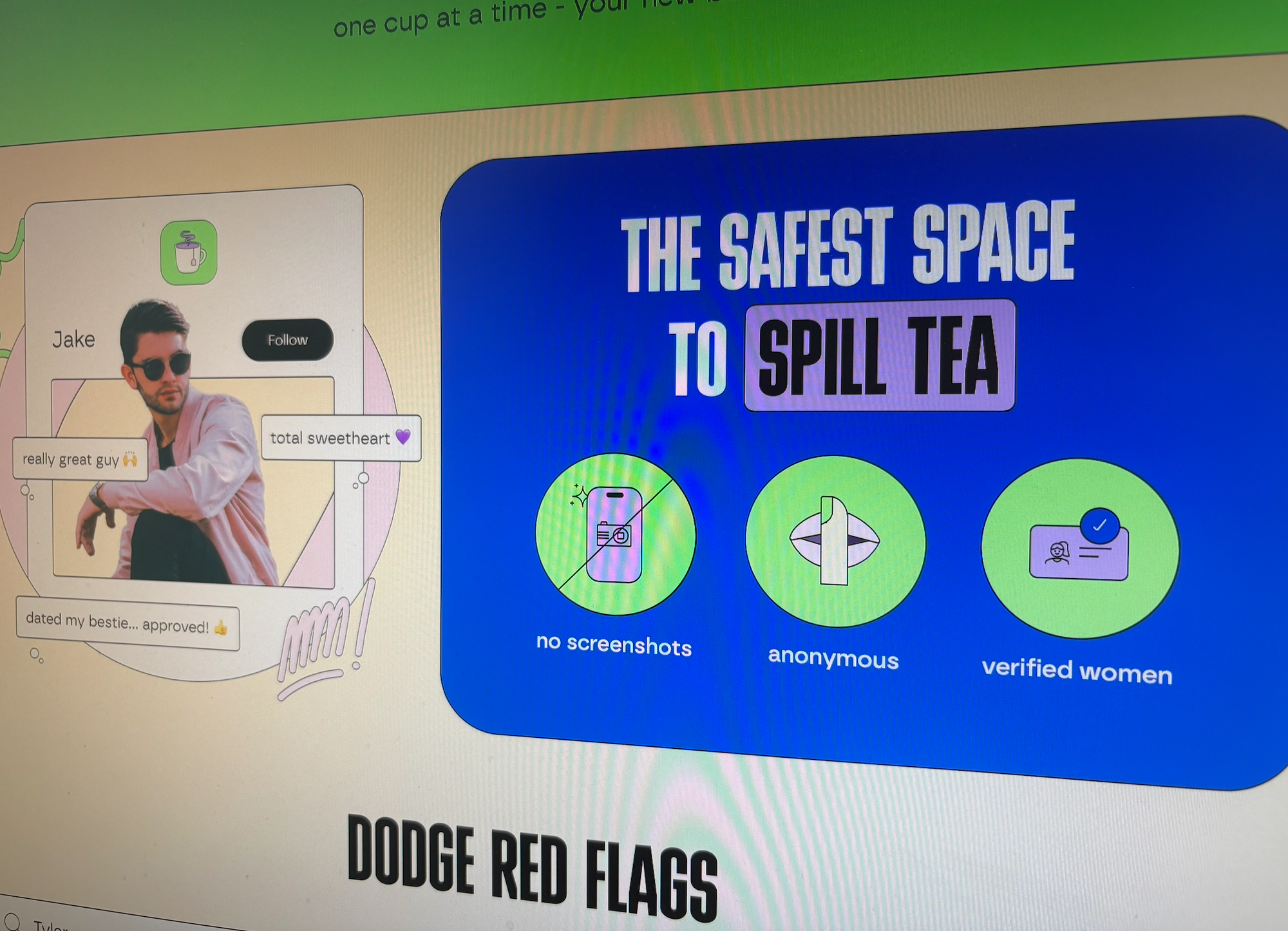
One of the big unanswered questions at last week’s grand opening of Hollywood’s Tesla Diner was how its neighbors were feeling about the new, four-story tall movie screen placed directly outside their apartment building.
Turns out, many of them are not liking it, or the general chaos that the diner has brought.
First, there was the construction. “Last night they have installed a flashing security light up against our fence,” Kristin Rose, a former resident of the apartment building next to the Tesla Diner, said in an email to the building management and to Tesla in February 2024, during building works. “This light is flashing BRIGHT into our apartments, including bedrooms, all night. Even with the blinds closed it feels like we're at the world's worst rave. Video is attached."
0:00/0:15
1×
Strobing light outside apartment. Video: Kristin Rose
Rose moved out in January of this year, which she says is “absolutely, 100 percent” because of the diner. “We were living through active construction six days a week from 7 a.m. to like 8 or 9 p.m.” she said. “Often that construction was starting at like 4 a.m. illegally.” She showed me several email chains where she discussed these issues with Tesla, the city of Los Angeles, her building management, and the construction company.
After construction started in 2023, she said, living in the building was “absolute hell.”
The strobing light was there for “about a week,” Rose told me, and was just one issue. Emails Rose shared with 404 Media show her going back and forth with Tesla and the building’s management about noise, flashing lights, and various other topics. “Our whole side of the building smells terrible from the emissions [from a generator],” one email she sent reads. “We're going not-so-slowly insane from the noise pollution. Requiring us to deal with this for 14 hours a day is actually insane.”
“At least 6 people in our building have called noise enforcement over the last few weeks,” she said in a March 2024 email. “It's hard to communicate just HOW CLOSE this construction is to our apartment building. Maybe 10 feet?,” another reads.
If you have more information about this story, please email rosie@404media.co or contact me on signal at romight.36
In one thread, building management told Rose “sorry about that generator, we know it's a problem … This is not the first time we've talked to them about issues. We explained that they need to move that generator to the other end of the lot … obviously they're not doing it.”
At one point, a Tesla employee apologized to Rose: “I sincerely apologize for the inconvenience and disruption caused by the construction near you and would like to assure you that the Tier 4, ‘WhisperWatt Super-Silent’ portable generator currently in use to provide temporary power to the construction site meets all pertinent standards and codes and was the quietest, least impactful unit we could locate.”
0:00/0:07
1×
Generator that was installed outside the building for several months. Video: Kristin Rose
I reached out for comment to Tesla, the city of Los Angeles, and the management company South Park Group, who did not respond.
At a protest against the Tesla Diner last weekend, I spoke to current tenants of the building, including Isabelle, who moved into Rose’s old apartment “about a week ago.” It had been empty for six months.
Rose had previously not talked publicly about the situation with the building because she was concerned that Tesla fans would know where she lived and she could face backlash for speaking out. 404 Media agreed to only use the first names of some of the current residents of the building for the same reason.
Neither of Isabelle’s apartment windows is blocked by a screen, so she didn’t think that noise would be a problem. However, she said, “I really don’t like it.” The diner operates 24/7, and “the sound goes on pretty much all night.” Now, “there’s always a line, there’s always crowds around. The traffic is horrendous.” She said she has begun sleeping with her AirPods in.
Isabelle’s apartment looks out over the supercharging parking lot, where cars are pulling up and people wait on foot to enter the diner in a line that I was told would take two-to-three hours.
0:00/0:01
1×
The view over the back car park lot from Isabelle's apartment
Another resident, Ashley, has lived in the building for around 20 years. Her apartment faces away from the diner, but she said that it has impacted the community, and the years of construction were tough. “Vibrating, they didn’t have regular construction hours… it was early in the morning, late at night, like bulldozers and graders in the back.” She said that the building message groups were busy; “everybody was like, everything's falling off the walls.” That said, she thinks things are worse now that it’s open. “I'd rather dust than this,” she said, waving at the Tesla lot. “Now it just smells like fried food out here.”
Ashley described herself as “pretty independent” politically, and doesn’t have any particular interest in Tesla. But she has suddenly found herself living next to a very politically contentious business. As we’re talking, a Tesla Takedown protest is ramping up on the other side of the lot.
“It’s been plenty of issues where people are trying to burn down Tesla and whatnot,” she said, “and it's like, I don't want to be living next to something that is so controversial.” In the week since my first trip to the diner, the gate of the building has been blocked and reinforced with metal.
Their street is a thoroughfare for diner guests. “You just try to even go to the gym in the morning and you can't get out of the driveway,” she said. “I don't think Tesla people are great drivers to begin with. Now there's just a bunch of them blocking the street on both sides.”
Rose is also not the only tenant who left. “The couple, two doors down from us—directly behind the screen—was an older Russian couple that had been there for probably 15, 20 years,” Rose said. “And they eventually [were] like, we can no longer do this.”
Ashley says the management company hasn’t been helpful, despite the number of long-term tenants moving out. “They didn't offer anybody any kind of incentives. I think Tesla should be paying our rent,” she said.


The gate to the apartment building has been reinforced for safety since our earlier reporting last week
Nilo, another new resident, said that she lives in one of the apartments behind the screen. She moved into the building two months ago. I met her when she came out onto the street to ask the protestors for an estimated end time.
She told me that construction had been “really hectic” since she’d moved in. “Now that it has opened, I understand, like, the protests, and, you know, people have the right to do that, but that's also kind of, like, disturbing our peace.”
She didn’t know if the previous residents of her apartment left because of the diner, but she and her roommate are considering moving out. She says the landlords haven’t done anything to the apartment to mitigate the almost 24-hour noise. “We just get a few hours of break and then it's back on again,” she said. “It feels like New York City.”
The movie screens don't have speakers; the audio plays inside the cars and on the diner rooftop. However, the back of the screens have fans, which operate all day and turn off at 11pm.
0:00/0:11
1×
The noise generated by the back of the diner screens, around 2pm on a Tuesday. Video: 404 Media
Noise also comes from people getting out of their cars, waiting in line, and sitting in the traffic generated by the diner entrance. “Everyone is, like, honking their horn all the time and all that. So, it’s a bit crazy,” she said. I watched cars crawl past from both directions to try to enter the Tesla lot via the Orange Drive entrance next to the building, where a guy in a hi-vis vest stops each car, talks to the driver, and waves people (in Teslas) through. Later, I saw a woman driving past yell out at him from her window. “You guys need to control this side better. You're holding up all the traffic.”
“We’re giving it some time because it's, like, opening week,” said Nilo. “But if it continues, we are going to eventually move out because it's not livable anymore.”
 The front and back of the screen next to the Orange Drive building. Photo: 404 Media
The front and back of the screen next to the Orange Drive building. Photo: 404 Media
The Zillow listing for the building describes it as "Next to a Tesla theater and drive-in charging station. Garage parking, gym and more!" Five of the building's 32 units are currently available. On Zillow, the building is offering a discount of a free month's rent on a 12-month lease for the last few months. Using my real name, I scheduled a tour of one of the vacant units. From the empty apartment I toured, I could see the back of the screen and hear the fans; about half of the balcony view was obscured. The crowd noise was quieter since it was a Tuesday afternoon.
The diner does have some fans in the building, however. Dean Barlage lives on the top floor of the Orange Drive building. He described the diner as “probably one of the best things that happened to Hollywood in the last, let's say 10 years or so.” One side of his apartment faces the screen and one faces the street. He thinks that a diner is a pretty good option, given all the possible neighbors one can have in a big city.
His wife Irina seems to agree, as she has recently posted similar sentiments on Instagram and X.


Irina Barlage, a resident of the building, is a fan of the diner and has been posting about it in the past week
“The ones right below us are still there. They're like, OK, we love our place,” he said, but he confirmed that several people had moved out. However, he said, the apartments were snapped up again quickly without problems. “It's a very hot building. I mean, they're large places. This is Hollywood.”
The construction hadn’t bothered him either. “It was peaceful before until they showed up,” he said, indicating to the protesters, “I cannot sleep with this. And luckily, this is just for a short time.” He hopes the diner will bring more tourism to the neighborhood. “I've never seen so many happy kids and so many happy families,” he said. “I'm actually closer to buying a Tesla than I was before… Not because of Elon, but I saw the joy over here.”


Dean Barlage on his balcony. Photos: 404 Media
“We see these people at 10 p.m. at night,” he said, “just happy, having their burger, putting some light show on in their Tesla and seeing some old school film. I mean, how can you not like that? This is the pinnacle of happiness and excitement.”
As I was leaving, I saw Dean up on his balcony, gazing out at the diner and the back of the screen. He waved and gave me a thumbs up.
From 404 Media via this RSS feed







 Stone tools dated to over 1.04 million-years-old, scale bars are 10mm. Image: M W Moore
Stone tools dated to over 1.04 million-years-old, scale bars are 10mm. Image: M W Moore






















 The front and back of the screen next to the Orange Drive building. Photo: 404 Media
The front and back of the screen next to the Orange Drive building. Photo: 404 Media


 Image via 4chan, blurred by 404 Media.
Image via 4chan, blurred by 404 Media.